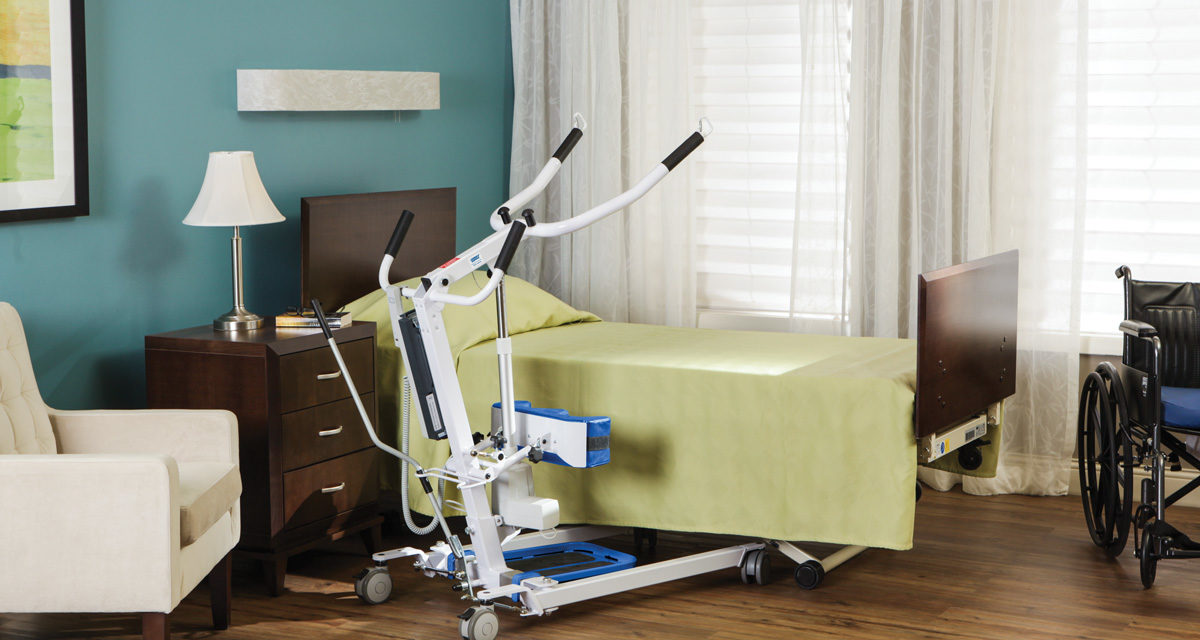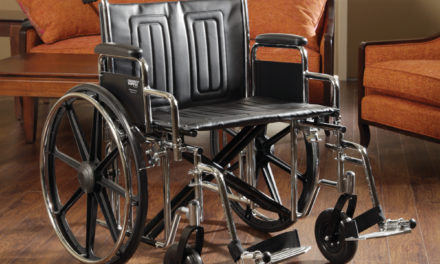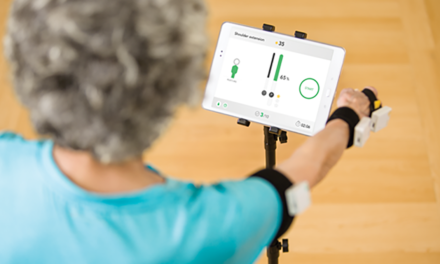With the ability to assist a resident from a seated to standing position, knowing how to use sit-to-stand lifts is beneficial in many Senior Living communities. They are most often used for residents transferring between surfaces, but can also be used effectively for dressing, grooming, steadying, supporting and repositioning. Lifts can increase safety and improve outcomes for staff and residents in your Senior Living community.
Help Increase Safety
The most important thing to consider when using a sit-to-stand lift is helping to ensure safety for both the resident and the caregiver. Before using any lift equipment, you must complete a resident assessment by a qualified clinician. The assessment should be:
- Multi-factorial (physical, mental, cognitive, etc.)
- Documented
- Communicated to caregivers
- Repeated (at time of admission, passage of time, change of condition, etc.)
While the assessment outlines requirements for the resident, we recommend a similar process to help ensure the caregiver is prepared for the lifting procedure and knows how to use a sit-to-stand lift. A caregiver should follow the below sit-to-stand lift instructions:
- Know the resident’s care plan requirements
- Verify the resident’s name, physical capabilities, mental status and medical condition
- Complete a visual lift and sling inspection before each use
Slings
-
Check all slings before every use for signs of wear, fading, discoloration and loose/broken stitches
Lifts
-
Scan the lift to ensure that all moving parts and fasteners are present and working
-
Ensure casters are tightly attached to the legs and are spinning freely
-
Check that caster brakes operate effectively

If any of the above items are unacceptable, STOP! Report the problem to your supervisor IMMEDIATELY.

- Disinfect hands and sling both before and after use
- Engage the resident and explain the lifting procedure
Help Improve Outcomes
After ensuring the proper requirements and procedures are met, the next step is to look at the many ways a sit-to-stand lift can improve outcomes in your community. In addition to simple transfers, these lifts can be a powerful exercise tool to help improve residents’ strength as a way to reduce dependency on lifting devices. To meet the shift of rising acuity in senior living, transfer and lifting devices can help achieve residents’ health and wellness goals. Additionally, they can open up a wider range of activities and interventions that wouldn’t otherwise be possible. Consider these applications as potentially applicable for a resident:
Transfers and Tasks:
- Sit-to-stand and seated-to-seated transfers
- Wheelchair-to-car transfers
- Showering and bathing
Training:
- ADLs and gait
- Wheelchair mobility
- Pivoting to prepare for transfers
- Ankle, hip and stepping strategies
- Gross and fine motor coordination
- Pre-gait activities to initiate step taking
Activities:
- Balance
- Weight bearing
- Toilet transfers and toileting activities
- Tilt test
- Muscle strengthening and stretching
- First-time bedside dangling
- Nose-over-toes standing
Techniques:
- Tone management
- Postural alignment and control
- Anticipatory postural adjustment
- Deep breathing and lung sounds
- Adjustment and control of center of mass
- Bilateral integration and manipulation
- Functional assessments
- Standing tolerance and endurance
- Weight shifting and dynamic stability
There are many possible advantages of using sit-to-stand lifts. From increasing resident and staff safety to improving the overall mobilization and engagement of your residents, these versatile devices could benefit many areas of your community. Explore our selection, including the customer favorite Direct Supply® Atlas Sit-To-Stand Lift, or contact your account manager for more information on finding the right lift for your unique resident population. Also, please be sure to consult with your facility management, complete all required training, and thoroughly review the owner’s manual before using a sit-to-stand lift as you are solely responsible for the safety of your residents.




